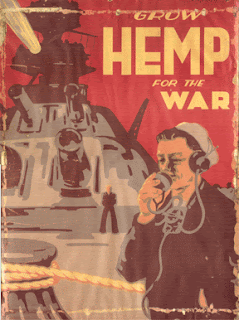Hemp continued in its rightful place as an important agricultural crop until the 1930’s when new machinery was invented to break the hemp, process the fibre and convert the hurds into paper.
This drew the attention of the synthetic fibre producers (nylon had just been invented) and the paper and cotton industry magnates, who believed that they stood to lose billions of dollars if hemp’s commercial potential was fully exploited.
They were largely responsible for the “reefer madness” propaganda campaign that, in 1937, resulted in the outlawing of this natural fibre and, with this, their natural competition.
They achieved this by demonising and outlawing the narcotic marijuana and thereby banishing the entire cannabis family, including hemp and its many thousands of legitimate uses.
The USDA then promoted hemp again with a film
“Hemp for Victory”, that urged farmers to grow the crop to meet the fibre demands.
1940 – 1955
A few years later, during the Second World War, the legislation was again changed when the Japanese cut off the supplies of Manila hemp needed for uniforms and ropes.
After a brief return to favour, hemp was again banned in 1955, and it remains so in the States to this day.
For more on Hemp, please see:
www.facebook.com/hemp4earth
Other sites:



